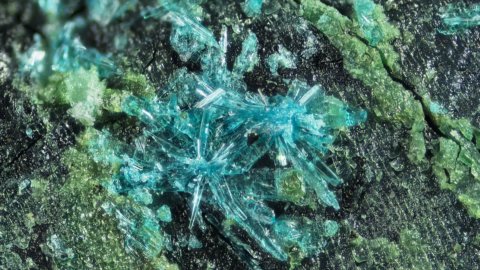In the Dolomites devastated by bad weather in recent weeks, which among other things has caused deaths and the destruction of thousands of hectares of woods especially in the Belluno area, there is room for some good news. It too concerns nature, that same nature wounded by the latest events which has led to the discovery of a new mineral, more than 200 years after the last time one was found in the Dolomites: it is called fiemmeite, as it was discovered in the Val di Fiemme, in eastern Trentino (one of the areas most affected by the floods), by a group of researchers from the MUSE museum in Trento.
The new mineral is a real gem, a mineralogical species hitherto unknown to science. "Until today, minerals known to science are just over 5.000 – commented Paolo Ferretti of MUSE -, not many if compared to the living species, which seem to number in the millions. Finding a new mineralogical species is therefore a much rarer event than discovering a new living being. To add exceptionality to this find is the fact that the fiemmeite comes from a territory, such as the Dolomites, by far one of the most studied in the world. In fact, since 1815, a new mineral has not been recognized in the Dolomites”.
1815 is the year of the discovery of gehlenite at Lago delle Selle (Monti Monzoni, Val di Fassa), the last major discovery if we exclude those already known but redefined following recent systematic reviews, such as pumpellyite-(Fe3+), chabasite-Ca and dachiardite-Na. The discovery of new minerals is not in itself an absolute rarity – between 100 and 200 new species are discovered worldwide each year – but it is important to consider that the Dolomites have been the subject of scientists' attention since the 700th century: it was in fact 1792 when it was dedicated to the transalpine geologist Deodat de Dolomieu dolomite, a mineral from which the Dolomites themselves took their name.
With the identification of fiemmeite, discovered to be precise in the San Lugano mine, in the Municipality of Carano, a further element of uniqueness – this time mineralogical – is added to those of a geological, paleontological, geomorphological and landscape nature, on which it is based the recognition of the Dolomites as a World Heritage Site. The mineral belongs to the group of oxalates, in this case a hydrated copper oxalate with chemical formula Cu2(C2O4)(OH)2•2H2O which crystallizes in the monoclinic system. Without getting too technical, it is characterized by very small light blue lamellae and it was found, in very small quantities, inside the carbonised trunks that abound in the basal part of the Val Gardena Sandstone, a sedimentary formation that originated in a river environment about 260 million years ago, in the Upper Permian.
The discovery and study were conducted by MUSE researchers Paolo Ferretti and Ivano Rocchetti, together with colleagues from the University of Milan Francesco Demartin and Italo Campostrini, thanks to the careful guidance of a passionate local mineral hunter, Stefano Dallabona (Gruppo Mineralogico Fassa e Fiemme). The officialization took place by the commission of the IMA (International Mineralogical Association) which presides over the nomenclature and classification of new minerals (CNMNC).





